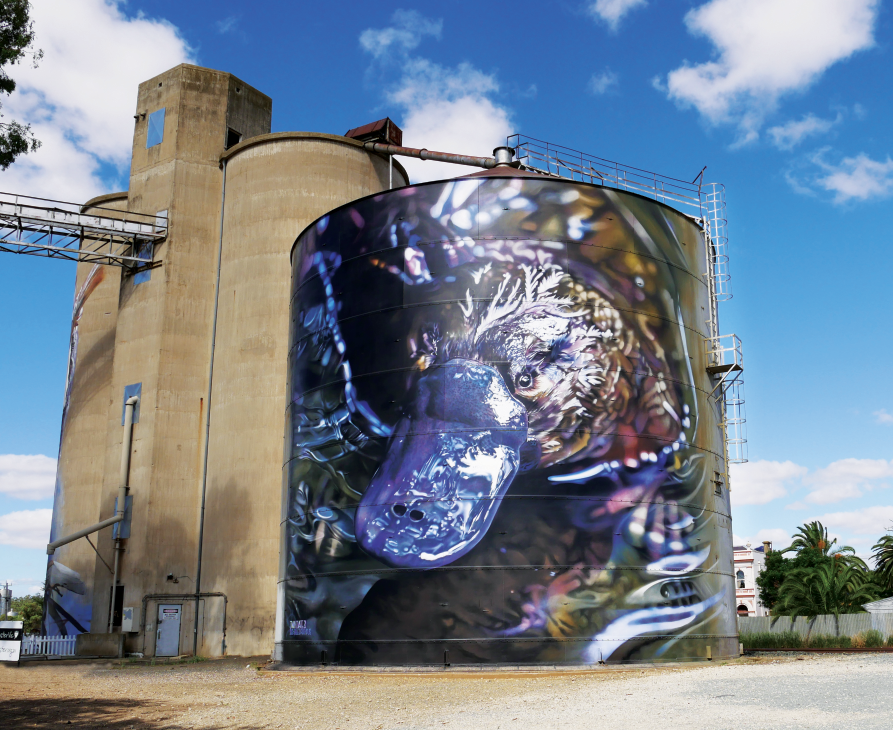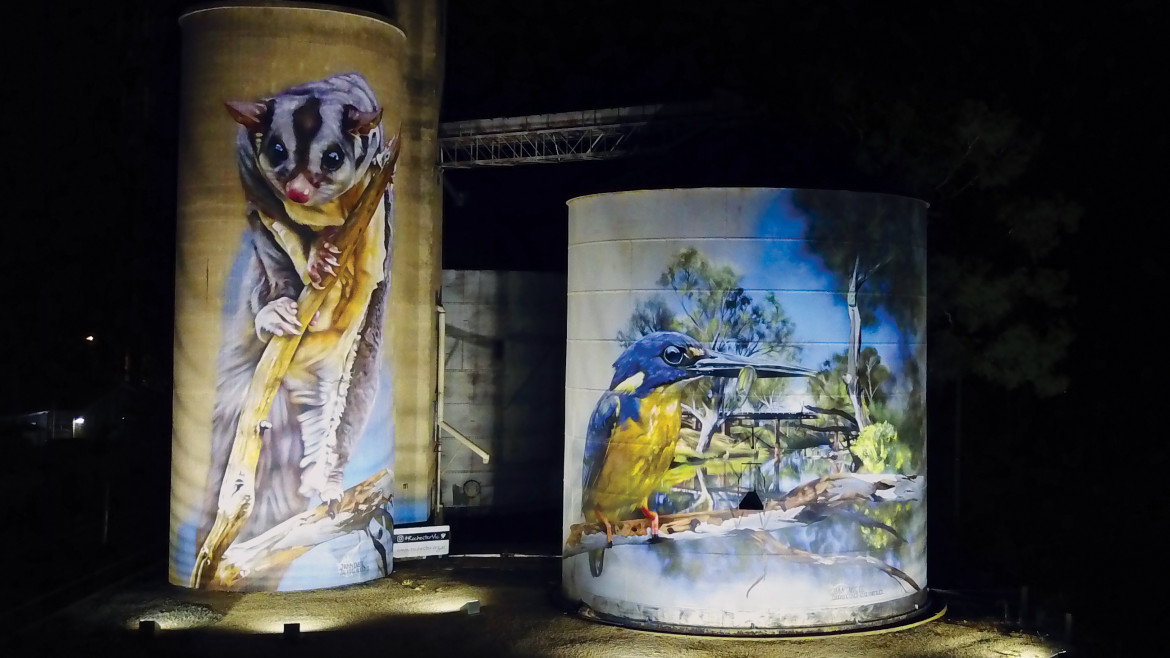Jimmy DVate
Rochester silo artist Jimmy DVate’s abundant talent has seen him travel the world.

Born in Malvern and educated at Monash University his art has seen him work in just about every state of Australia with stints as far away as London and Los Angeles.In the past 10 years he has had two successful trips to Europe where he left large scale murals in Belgium, Denmark and the Netherlands. Back home he has won awards and produced quality murals all highlighting Jimmy’s growing passion of local flora and fauna.
When commissioned and where possible Jimmy will choose a plant, bird or native animal that is either endangered or threatened, his ultimate aim to raise awareness of conservation issues. Jimmy comes from a multicultural background and grew up camping and exploring the bush, always with a strong love of nature. He is the brains and the brawn behind the Rochester Silo Artwork and leads a small backing team consisting of his wife and project manager Carmen and his friend and photographer Casey Richardson. Locals watched with interest as a magnificent Azure Kingfisher sitting on a branch alongside the Campaspe River featuring the red rail bridge and beautiful vegetation appeared on the first silo.
By the time work started on the second silo, locals were joined by travellers and tourists from all over. They all took time to stop and admire and discuss firstly the outline, then overtime quietly stood in awe as a massive endangered Squirrel Glider (Petaurus norfolcencis) clinging to a Red River Gum branch made his entrance. After working on the Graincorp Rochester silos for over a month, Jimmy and Carmen now have plans to take a well-earned rest and travel OS.
On behalf of the town and local residents our heartfelt thanks and best wishes for a job very well done go with them. V. Groat
WHO’S THE LARGEST?
The endangered Squirrel Glider (Petaurus norfolcencis) is the largest of three gliders that inhabit this region of Northern Victoria.
Others are the Sugar Glider (Petaurus breviceps) and the Feathertail Glider (Acrobates pygmaeus).
Squirrel Gliders use their big fluffy prehensile tails as a rudder and can glide up to 50+ metres between trees.
Active at night, these agile climbers forage for insects and bugs in the upper and lower forest canopy.
Look out for these clever little mammals in tree hollows and nest boxes along the Campaspe River walk.
Information and photograph supplied by the Strathallan Gilder Sanctuary

WHO’S THE BRIGHTEST?
The Azure Kingfisher with his radiant blue head and body is the brightest coloured of all four kingfishers found in northern Victoria.
He inhabits rivers, creeks and wetlands and is related to the Kookaburra family.
The Kingfisher is 18cm long from tip of beak to tail end.
His flight is swift and low over water.
Keep an eye out for these colourful native birds along the Campaspe River walk.

Information supplied by the Strathallan Family Landcare. Photograph by Russell Jones.
The Rochester Silo Art project is an initiative of Rochester Business Network (RBN), supported by local businesses and families of the Rochester community. The silo canvas and support services have been generously provided by GrainCorp.
PLATYPUS (Ornithorynchus anatinus)
The Platypus one of the most unusual and interesting animals in the world can be found at various locations along the Campaspe River at Rochester in northern Victoria.
This unique looking creature has a duck like bill, large webbed feet to assist in swimming, claws for burrowing and a beaver-like flat tail to help them dive.
While Platypus are most active at night feeding may occur during the day and some individuals may be quietly active during daylight hours.

Platypus are most often seen swimming at the surface of the waterway with only the muzzle and a small part of the head above the water.
This strictly aquatic animal can most readily be spotted in places where the water surface is fairly calm and clear. Observers should sit quietly and watch for ripples formed on the water surface as the platypus swim and dive.
The platypus paddles gently with its front feet while floating on the surface creating a bull’s-eye pattern of ripples which becomes stronger as the animal dives.
The platypus is special in one striking respect, as they lay eggs that hatch outside the mother’s body, as birds do. The female will lay 2 eggs in a nursery burrow chamber, and will incubate them between her belly and her curled-up tail for up to 14 days.
This amazing egg-laying mammal is called a monotreme.
https://www.facebook.com/rochestersilos/

